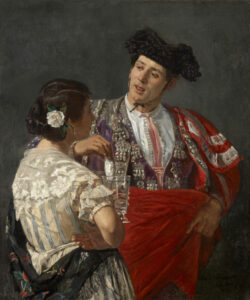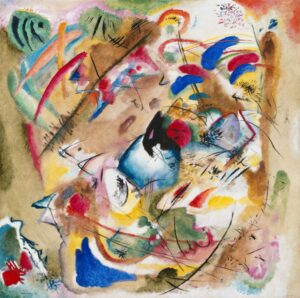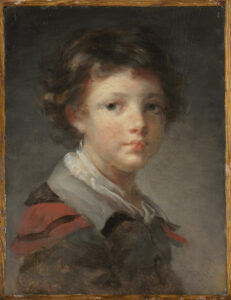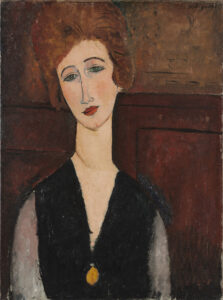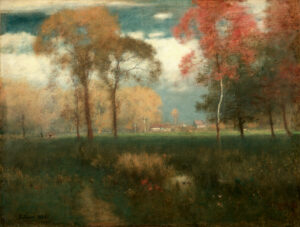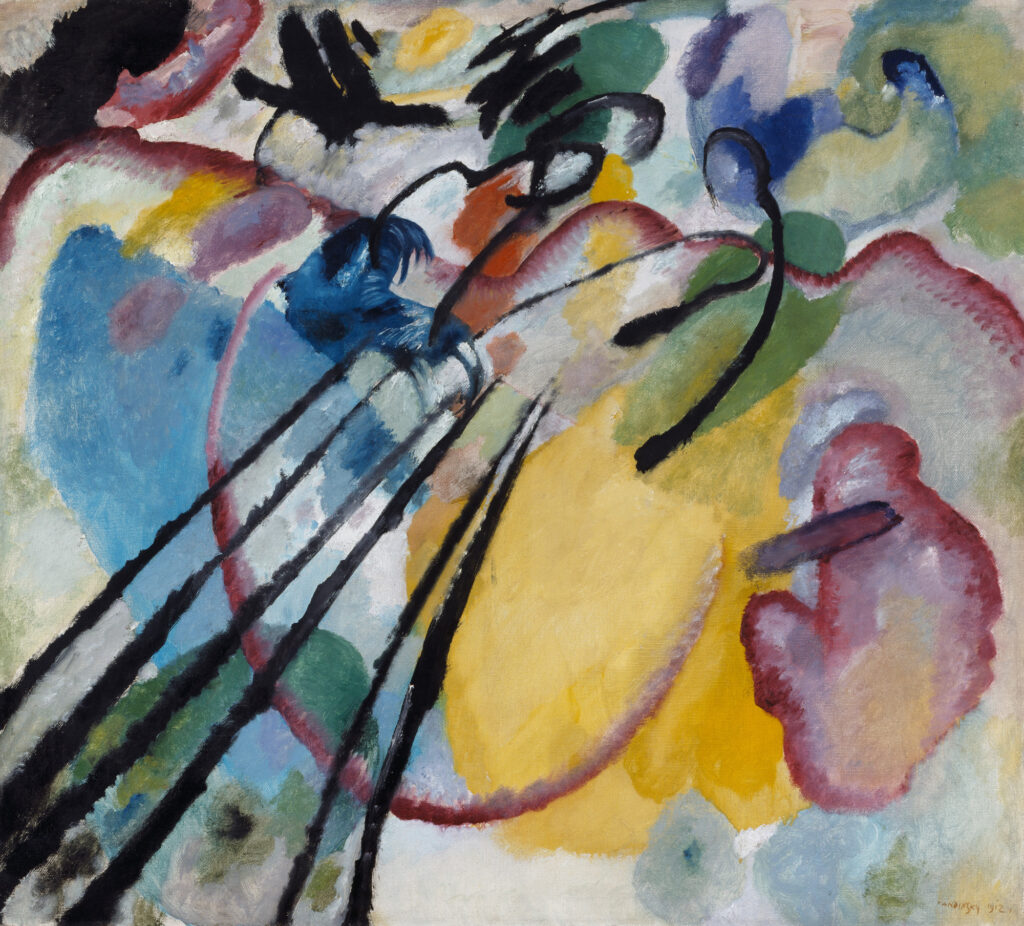
Improvisation 26 (Rowing), from 1912, perfectly illustrates Kandinsky’s decisive transitional period toward pure abstraction.
The subtitle reveals the presence of a rowboat, a recurring motif in the painter’s symbolic universe, simultaneously evoking departure, liberation, and spiritual metamorphosis. The silhouettes of the rowers, identifiable by their curved backs and the diagonals of the oars, stand out in black against a vibrant chromatic background.
The formal innovation lies in the total emancipation of line and color, now autonomous. The red curves of the boat’s hull dialogue with the undulations of the horizon line, while colored masses create a dreamlike space. Kandinsky here revolutionizes traditional spatial construction: rather than resorting to classical perspective, he exploits the psychic properties of colors to generate an ideal space.
Further information
- Wassily Kandinsky, Improvisation 26 (Rowing), 1912
- oil on canvas, 97 cm x 107.5 cm
- Städtische Galerie im Lenbachhaus und Kunstbau Munich, Gabriele Münter Foundation 1957
- https://www.lenbachhaus.de/en/digital/collection-online/detail/improvisation-26-rudern-30018445
Wassily Kandinsky (1866-1944) embodies the tutelary figure of the 20th century’s artistic revolution. Born in Moscow into a well-to-do family, this trained lawyer abandoned a brilliant academic career at thirty to embrace painting in Munich. An encyclopedic mind nourished by philosophy, music, and occult sciences, he forged a revolutionary aesthetic that definitively freed art from the imitation of the visible. Co-founder of Der Blaue Reiter group with Franz Marc in 1911, he theorized in his fundamental writings—”Concerning the Spiritual in Art” (1911) and “Point and Line to Plane” (1926)—a synesthetic conception of creation, where colors and forms possess their own psychic and spiritual resonances. Professor at the Bauhaus from 1922 to 1933, then a refugee in Paris, Kandinsky developed a plastic language of increasing complexity.

